The Earhart-Noonan SOS Sign Deciphered?
The Principles On The Jaluit Island Dock...What's In
A Photo?
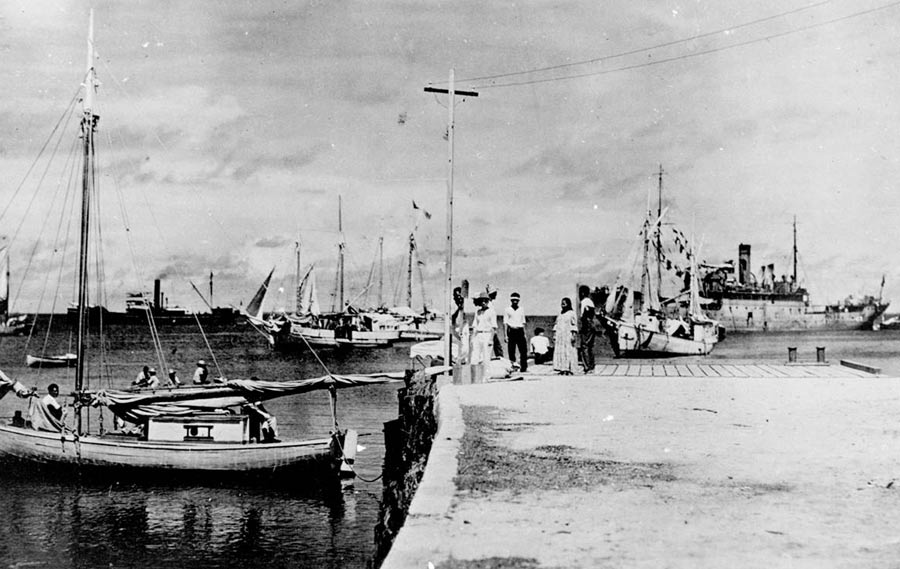
In The Photo Below, Fred Noonan Is Standing To The
Left Holding A Sign. The Person To The Right Of Fred Wearing The
Hat Is Likely Eurasian And A Possible Translator Used By The Japanese
To Talk To Amelia And Fred. This Person, Maybe A Female, Has A Lighter
Skin Tone Than The Marshallese People Further To The Right.
Note also that this person is wearing sunglasses which were NOT
mass-produced in that time. So, it is reasonable to suggest they may
be Amelia's aviator sunglasses, used as a clever device to let the
world know she was there, sitting on the dock, with her back to the
camera. If both Fred and Amelia had posed, face-first to the
camera, it would have likely guaranteed the photographer's immediate
arrest and confiscation of the film. As it was, the
photographer was later said to have been arrested and executed by
the Japanese for spying. |
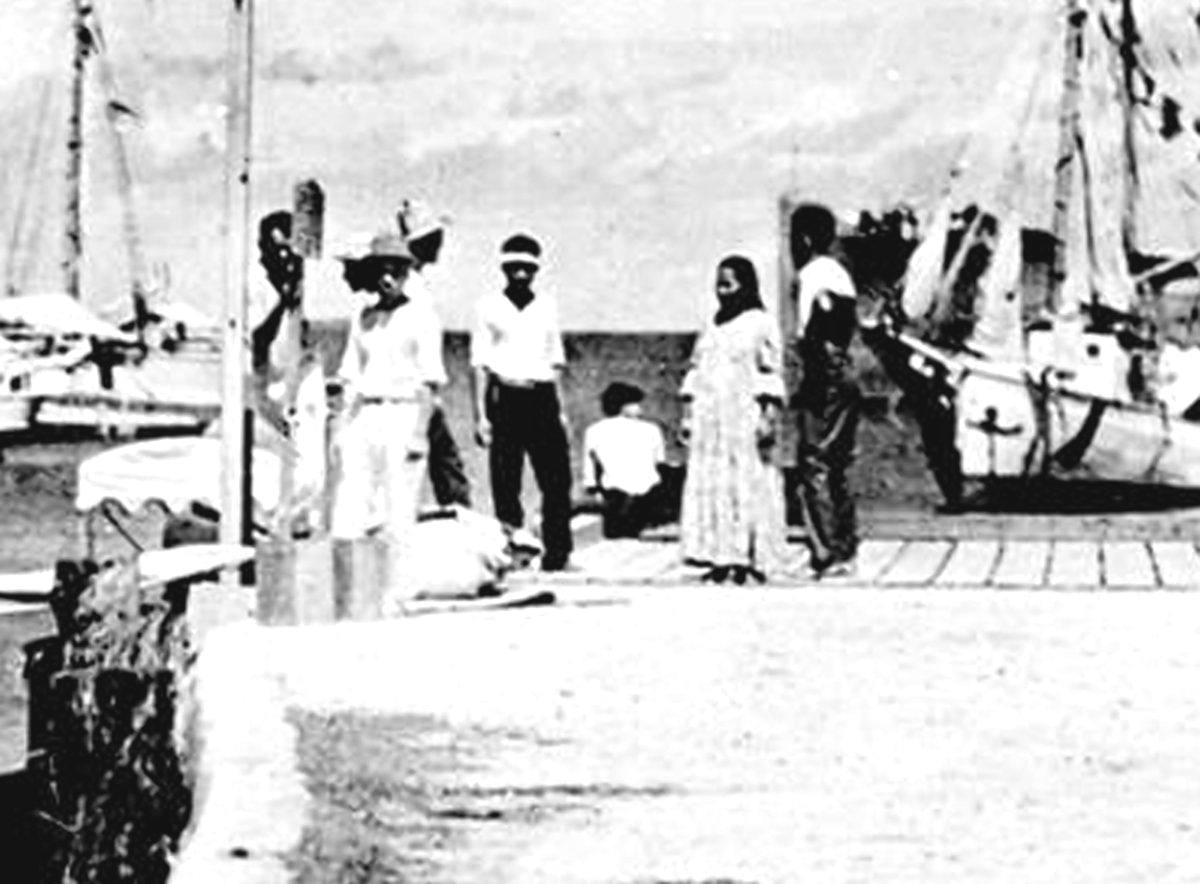
This Close-Up Shows Fred Noonan And The Eurasian To
The Right In The Sunglasses
Fred, Also Appearing To Be Wearing Sunglasses, Is Holding A Hand-Writren
Sign…Like An SOS Flag
None Of The Writing Can Be Recognized As English And May Be Asian Language
Symbols
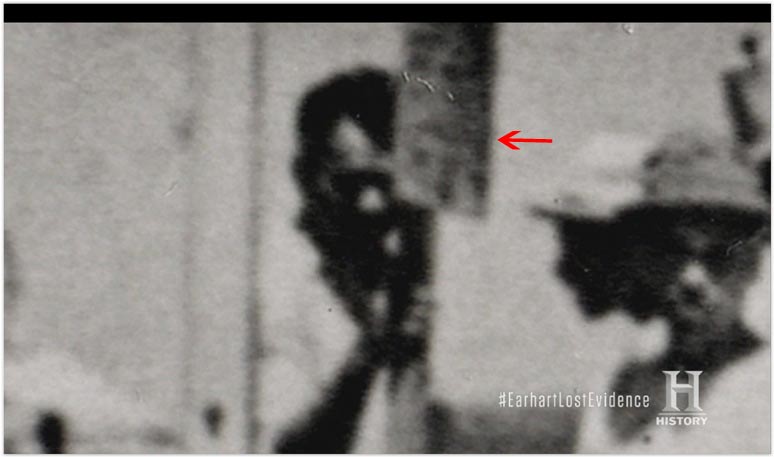
It's Fred Noonan Alright! His Utterly Distinctive Hairline
Is Casting A Shadow In The Overhead Noon Day Sun
It Also Appears He May Have Been Wearing His Aviator Sunglasses In The
Jaluit Photo
(Photo Overlay Courtesy Larry Rivera)

What Could Possibly Be Hand-Written On The Sign Fred
Is Holding?
Enlargement Suggests The Third 'Smudge' Up From The Bottom Could Be
A Korean, Deer-Like, Magic Creature Called A 'Kirin'
Here Is The World Famous Kirin Beer Label Showing The Magical Deer Flying
In The Sky


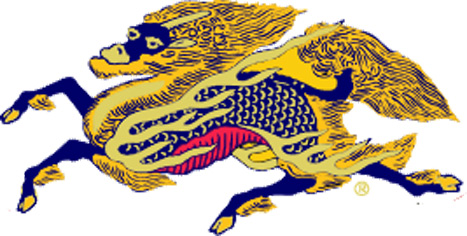
Is That A Hand-Drawn Symbol Of A Kirin? Was The Sign
Made By One Of The Korean Slave Laborers On The Island
Brought There By The Japanese Army To Build A Runway And Other Japanese
Military Facilities?
Rather Than 'Text', The Third Item From The Bottom Up On The Sign Is
Different From The Other Characters Below It

What Do You Think?
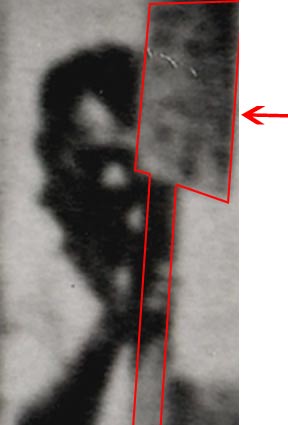
Just A Simple Photo Of People At The End Of A Dock?
It Certainly Doesn't Seem So...

Analysis Below By Yoichi Shimatsu
7-19-17
The mainstream media involved in denying the validity
of a photograph taken of a Amelia Earhart and her navigator Fred Noonan
on a dock at Japanese Navy-controlled Jaluit Atoll cite only one bogus
claim for “debunking” that telltale evidence: That the photo is a page
from a “book” published in “1935”, two years before Earhart’s disappearance.
These debunkers overlook the fact that the disputed photo was never
reproduced in book form but was inserted into a photo album produced
at the Japanese militarist spy center in Palau, at the colonialist South
Sea Agency (Nanyo-cho). That photo collection was deliberated back-dated
to avoid detection in case of interception by a Pacific Islander still
loyal to former colonial power Germany or spies working for the Australian
or Dutch intelligence services. At the time the photo was taken, nearly
six months after her disappearance, those Western intelligence agencies
were cooperating with the U.S. effort on an intense regional search
for the missing pilot.
To accept at face value such a dubious date stamped by a known colonialist
intelligence service is similar to how a tourist can proudly wear a
$40 gold Rolex bought from a street vendor in Hong Kong or Bangkok.
This sort of buffoon wants to be deceived and actually thinks he’s fooling
others. Go back to Atchison, Kansas, you clodhopper, where your neighbors
might actually impressed.
Let me put it bluntly to Newsweek and other willingly gullible media
outlets: Your absurd attempt to deny the History Channel’s evidence
shows either that you are disreputable enough to accept an unreported
payment from an agent of the Japanese Foreign Ministry or you just rose
to the sucker bait without any qualms.
Next, for serious-minded individuals, Jeff Rense and I have completed
the photo analysis that should dispel any lingering doubts. On either
side of the Pacific Ocean, Rense and I examined the many details of
the disputed dockside photograph. Jeff noticed that the small banner
held up by Fred Noonan contained visual anomalies, which he assumed
was a coded message.
Acting on his observation, I used software to enlarge the image, which
revealed the outline of either a skull or a oddly shaped head with large
eye sockets. Although disappointed that the banner did not contain an
SOS message in writing, the Rense crew did a precision image analysis,
which revealed it to be a painting of an four-legged animal, which they
could not readily identify.
Examining their enhancement, I recognized the creature to be a baby-sized
Kirin (Qilin in Manchurian and Mandarin), a mythical creature of the
shamanic cultures of Manchuria, Korea and Siberia, and also Japan. In
China, this animal is more of a chimera composed of features of a dragon,
eagle and lion, but for the Far Eastern and Arctic cultures, the kirin
is primarily based on a large deer, much like the sacred reindeer portrayed
in Hayao Mizazaki’s anime “Mononoke Hime” (Princess of the Wild Creatures).
Why would an artistic individual on the Marshall Islands give this painting
to Noonan? For one thing, a kirin walks on the clouds and the image
would therefore identify Noonan and his companion as pilots or “cloud
walkers”. The Kirin beer logo depicts a kirin with wings, and from a
brewery established in 1888 that brew was the most established brand
in the Japanese colonies. The creature is associated with flying.
Then, after giving this puzzle some thought during a night of thunderstorms,
the solution dawned on me. The kirin walks in the heavens, the sky,
but which of the five basic elements in the Asian tradition is the sky
made of? It’s Wind, or Air.
What, essentially, is a kirin? A reindeer, a deer, a hart.
The visual language is absolutely clear: Air Hart, the pronunciation
of Earhart.
The kirin that Fred Noonan is holding aloft at Jaluit means: Air Hart.
Earhart is here.
Decades to Decipher
Slimy media fakers and slithery propagandists, now go find a rock to
hide under because your denials do not stand up to the light of day.
Why in the space of 80 years were the U.S. Navy’s cryptographers and
the NSA unable to decipher this SOS message? They looked at the problem
too narrowly, whereas the solution requires multiple perspectives. To
solve the riddle, one must see things from the different perspectives
of the parties involved: the American government, the Japanese colonial
authorities, the local Pacific Islanders, and the most ignored group,
the Korean slave laborers sent to build airfields on the southern Marshalls.
At first, it’s confusing like the Rashomon effect, but then one must
sit and allow the satori to happen in a flash of recognition. Air Hart.
Never underestimate the sharpness of the mind.
The Painter
Whoever painted the Kirin held up by Noonan must have been: first, a
Korean with the large group (at least one thousand) on Jaluit Island;
fluent in English to be able to converse with and act as a translator
for Earhart and Noonan; and endowed with the artistic skills to paint
a child-like kirin.

The likeliest person who crafted the SOS message is the slim, petite
woman casually standing next to Noonan. Dressed in men’s clothing, except
for her blouse (with its darts), her diminutive height and slender figure
are possibly due to a childhood of deprivation under harsh Japanese
colonial rule over Korea since 1905 (actually earlier with de facto
control). She appears to be Eurasian, perhaps the daughter of a Canadian
Protestant missionary in Korea or a White Russian scout for the Japanese
Army during their Siberian military intervention. In either case, with
one parent in the foreign community, she could speak English from childhood.
She was probably sent from Jaluit to Milli island to translate for the
Japanese team that found the injured Noonan and Earhart, and located
their damaged Lockheed Electra, which overshot the short runway that
was still under construction. Her sympathies were with her fellow prisoners.
The childlike quality of the kirin image that resembles a fawn reminded
me of Bambi, the first English-language version of which had been published
in 1928 (after the German original by Austrian novelist Felix Salten).
This is exactly the sort of tale that Christian missionaries would have
used to teach English to Korean children: a story of the moral virtues
of natural inhabitants on their native soil versus the cruelty of invasive
gun-toting hunters. In the context of militarist-occupied Korea and
the many other imperialist colonies, “Bambi, a Life in the Woods” could
be seen as a guide to a people’s survival under extreme foreign oppression,
as for example, the harsh terms following World War I imposed by the
Treaty of Versailles on the former Austro-Hungarian Empire and on Germany.
At the time that the Japanese Navy was secretly building airfields in
the southern Marshall Islands, Korean laborers comprised the majority
of population on several thinly populated atolls. In the slave-labor
camps, better educated Koreans served as guards, support staff such
as cooks and laundry workers, and even in lower-level administrative
posts. Japanese language was mandatory in education and in public life
in colonized Korea.
The Japanese intelligence service, which operated at Navy facilities
and the South Pacific Agency (Nanyo-cho), were constantly on the watch
for spies and subversive elements among the Korean workforce and the
Marshallese islanders, and eventually many of those unknown heroes who
helped Earhart and Noonan were shot on charges of espionage, like the
photographer at Jaluit Island, who is survived by his granddaughter,
now the governor of the northern Marshalls trust territory. The hunters
were cruel indeed, and those who deny the ruthlessness and deceptions
of Japanese militarist colonials are only fooling themselves. The truth’s
out, thanks to a magical deer.